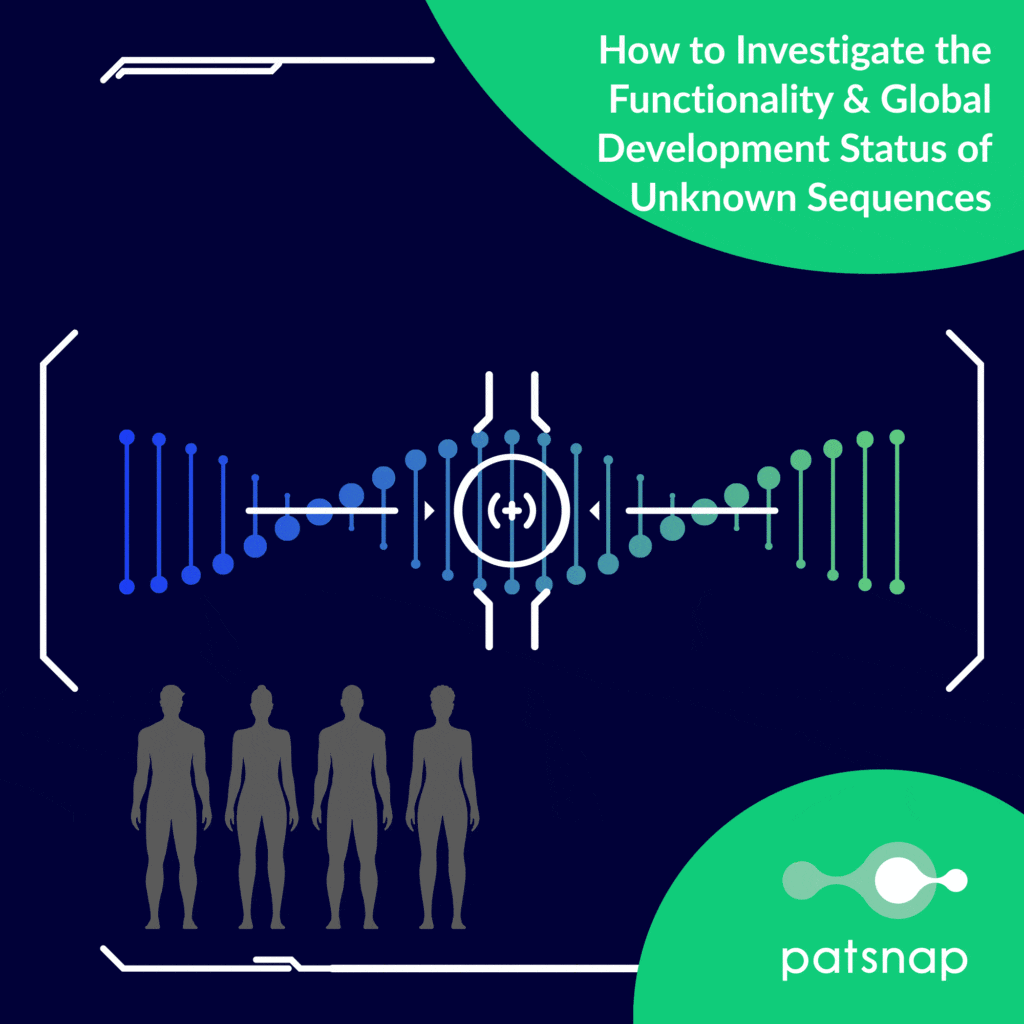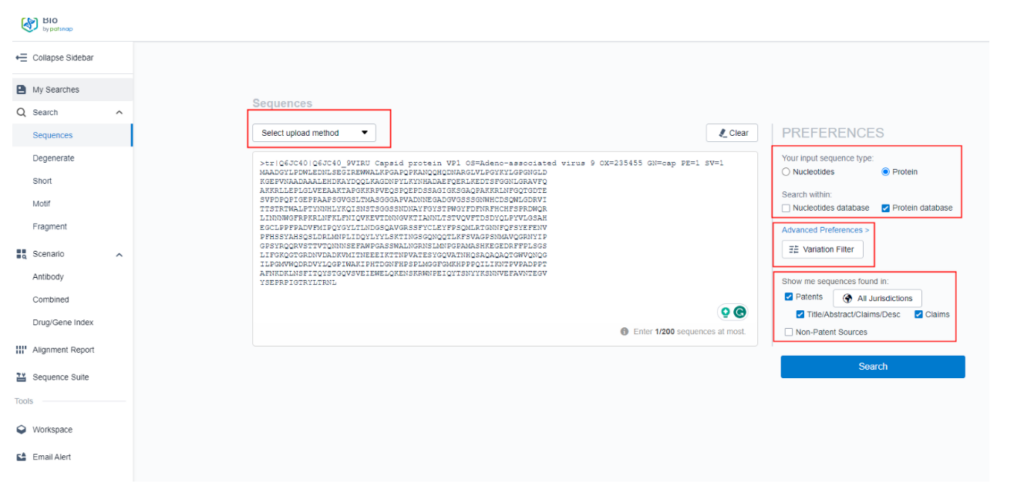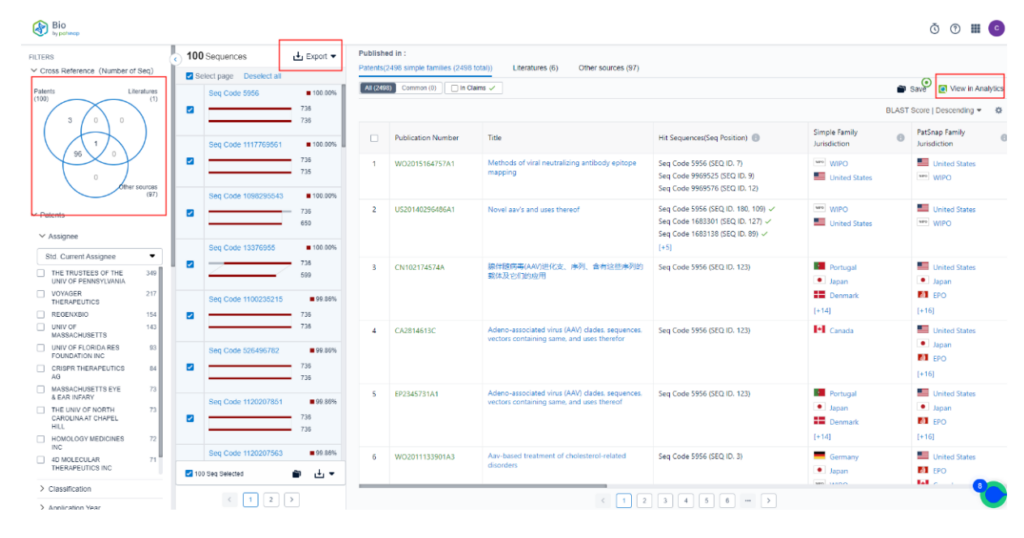Patsnap Bio: How to Investigate Sequence Functionality & Global Development
Only one out of every 5,000 drugs becomes salable. Excessive costs coupled with steep regulatory burdens, and incomplete or inaccurate information make it difficult for new drugs to penetrate the market.
Overcoming these hurdles is no easy task, and why 96% of drugs never make it to market. But the tide is changing. Research that previously took years to complete can now be done in a matter of days or weeks. Technological advancements in AI and machine learning make it faster and more efficient for scientific researchers to identify antibodies, validate targets, and analyze chemical structures and unfamiliar sequences.
In this article, we’ll explore how to use Patsnap’s Bio Sequence Database to explore the functionality and applicability of unknown sequences. To illustrate this process, we’ll take a closer look at AAV (adeno-associated virus) drug development, serving as a tangible example of how sequence exploration can be achieved.

Jump to . . .
- What are AAVs?
- What is AAV Drug Development?
- How Does Patsnap Bio Accelerate Scientific R&D?
- About Patsnap Bio
What are AAVs?
Adeno-associated viruses, commonly referred to as AAVs, are a class of small, non-enveloped viruses that have gained significant attention in the field of biotechnology and gene therapy. These viruses belong to the Parvoviridae family and are characterized by their ability to infect both dividing and non-dividing cells, making them particularly appealing vectors for delivering genetic material into host cells.
AAVs are naturally occurring in humans and other animals, and they are generally considered non-pathogenic, meaning they do not cause significant disease in their natural state. This safety profile has made them a popular choice for gene therapy applications.
Researchers have harnessed the unique properties of AAVs to develop a versatile platform for delivering therapeutic genes into target cells. By engineering these viruses to carry specific genetic payloads, scientists can use AAVs to replace or correct faulty genes, introduce therapeutic proteins, or modulate cellular functions. This approach holds tremendous promise for the treatment of a wide range of genetic disorders, including inherited diseases and genetic mutations responsible for various medical conditions.
What is AAV Drug Development?
Imagine AAVs as tiny “drug delivery trucks” at the molecular level. Scientists modify these AAVs to carry genetic instructions or therapeutic molecules to target cells within the body. Once these AAVs reach their destination, they release their cargo, which can include instructions to produce a beneficial protein, fix a genetic defect, or regulate cellular processes.
AAV drug development has shown great promise in treating a wide range of medical conditions, especially genetic disorders. For example, in cases where a person has a faulty or missing gene that causes a disease, AAVs can be programmed to carry a corrected version of that gene and deliver it to the affected cells. This approach has the potential to provide long-lasting relief or even a cure for genetic diseases.
AAVs can also be used to deliver therapeutic proteins directly to specific tissues or organs, making them a versatile tool for developing treatments for various diseases, including those that affect the nervous system, muscles, and organs.
How Does Patsnap Bio Accelerate Scientific R&D?
Now let’s explore how to use Patsnap’s AI-powered Bio platform to extract the insights you need for more efficient R&D. We’ll use the example of AAVs.
Within our Bio database, the first step is straightforward — simply input the raw AAV9 sequence and apply filters to search for related sequences. The image below provides an example of what you should see on your end when you run this search.
Next, select the “View Sources” option. This will provide you with an in-depth breakdown of the listed sequences for more comprehensive analysis.
To further enhance your query, simply incorporate specific keywords and target tissues when searching through the database. Using this approach, you can quickly identify core patent sequences that streamlines scientific R&D.
About Patsnap Bio
Patsnap Bio offers the most extensive sequence search platform within Patsnap’s suite of products. Merging AI with expert-curated data, it offers an in-depth analysis of protein and nucleotide sequences sourced from global patents, biological journals, and public databases. Key biological sequences receive manual annotations, highlighting structural changes, ensuring utmost accuracy and optimizing sequence retrieval efficiency.
To get started, create an account today. Registration is free, so you have nothing to lose and so much insight to gain!


